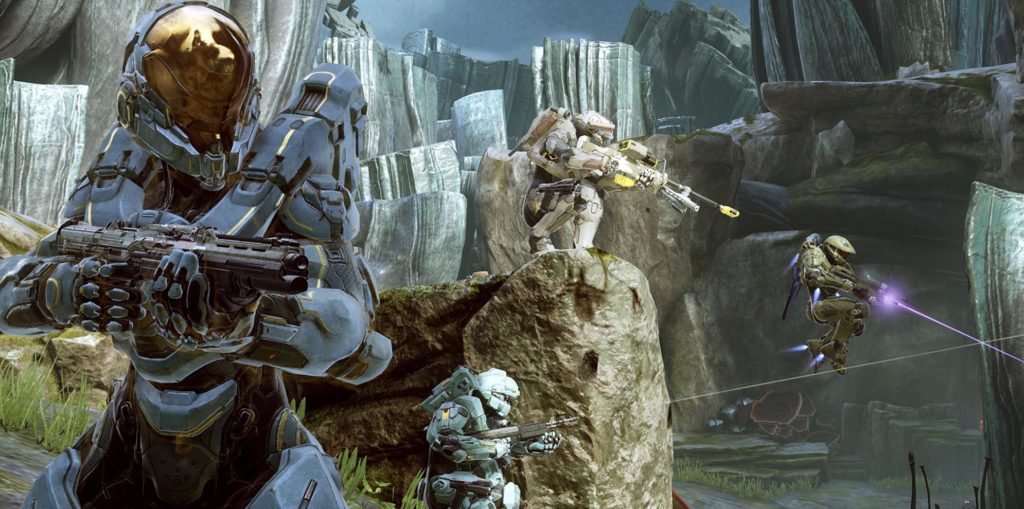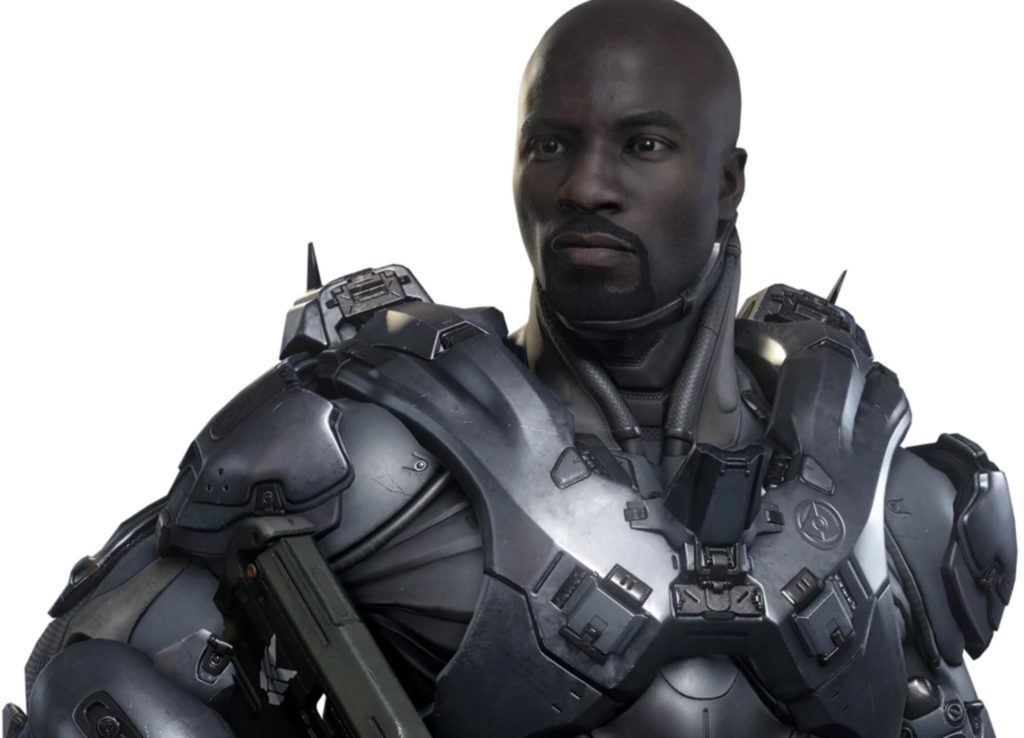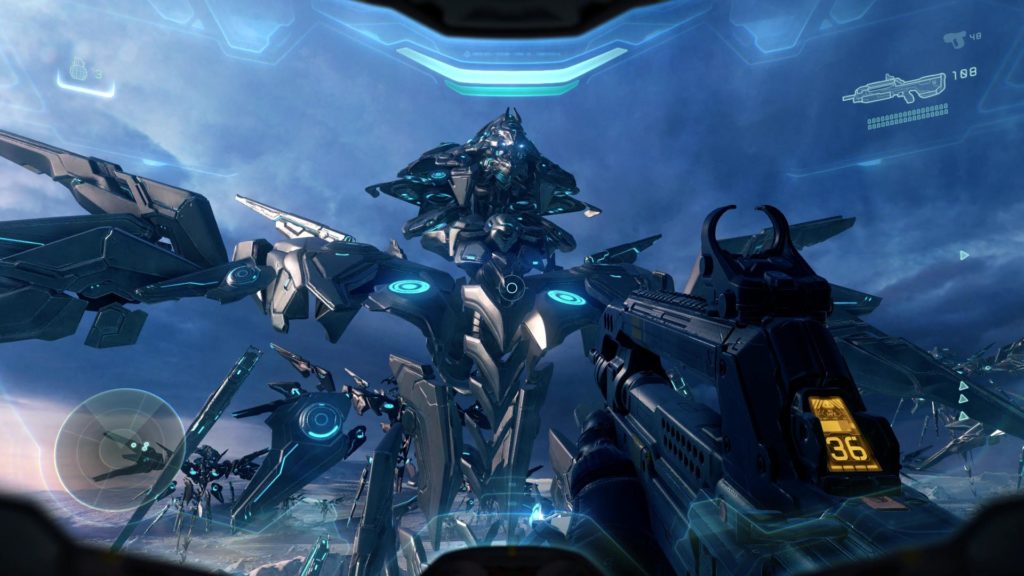
Halo Infinite is approaching faster than a Flood-infested Covenant cruiser, and yes, it looks cool from the trailers we’ve seen. Chief’s new bright green, chunky armour is gorgeous, reminiscent of the old days spent playing the free Combat Evolved demo after school, and the return to the original Halo ring is certainly interesting, but we’ve got one major problem with the rhetoric around Halo Infinite: the idea that 343 Industries is ‘fixing’ Halo, that this signifies a ‘return to form’.
Let’s get one thing straight – Infinite ‘fixing’ Halo isn’t possible, because Halo wasn’t broken. Halo 5: Guardians is not only a passable or acceptable game, it’s a great one, and we’re gonna tell you why.
Story and Characters
It’s no secret that 343 didn’t quite stick the landing with Halo 5’s story. Even if we can’t defend it entirely, we can favour it by saying it was ambitious, and that’s not a bad thing. Halo 5’s story had a lot of interesting ideas going into it:
- Playing as a cool new main character, a ruthless and cunning Spartan on par with the Chief.
- Hunting down the franchise lead for reasons unknown.
- The opportunity to give Chief the reverence and legendary status he deserves by seeing him through the eyes of other characters.
- The chance to finally meet Dr. Catherine Halsey, a figure who’s previously only been an evil shadow lurking in the background.
- To go into Chief’s psychology regarding Halsey’s experiments on the Mark II Spartans as children.
- To explore the rift between UNSC soldiers and ONI assassins.
- The conflict of ‘old vs. new’ soldiers, shown through Chief’s Mark II Spartans and Locke’s Mark IV Spartans.
- And finally, the ethics of using AIs and then killing them once they deteriorate beyond usefulness, which leads to Cortana’s revolution.
Even the creative director at 343 called it “overwhelming”. And, we know, listing a bunch of things that the writers hinted at but never fully developed does not a good game make, but it shows progress at least, that can hopefully be expanded upon in Halo Infinite.
Apart from the long list of wasted potential, here’s what Halo 5 actually did right:
 Firstly, Jameson Locke, a new badass protagonist. Aside from his voice and motion capture actor, Ike Amadi, being scary as all hell with that commanding voice, Locke is just a cool guy.
Firstly, Jameson Locke, a new badass protagonist. Aside from his voice and motion capture actor, Ike Amadi, being scary as all hell with that commanding voice, Locke is just a cool guy.
He holds his own against Master Chief, earns the Arbiter’s respect, and the subplot about him being an ex-ONI assassin turned Spartan is handled well. Throughout the game, a lot of characters call out Locke’s past with ONI, assuming he’s just some cold-blooded assassin with no heart, but it’s alluded to in a scene at the start of the game that a past experience where he was saved by Master Chief changed him for the better, and turned him into the Spartan he is now, someone who actively seeks to distance themselves from ONI.
Locke still follows orders dutifully as he always has, but it’s clear that he cares for the people he’s supposed to be fighting for. Locke is a worthy main character alongside Master Chief and the Arbiter.
 Something that Bungie’s first trilogy of games did well was building up the mystique of what the Halo installations’ purpose was, who the Forerunner race were, and what the Flood were.
Something that Bungie’s first trilogy of games did well was building up the mystique of what the Halo installations’ purpose was, who the Forerunner race were, and what the Flood were.
Halo 5 reintroduced this mystery element with the Guardians, the enormous creatures summoned from within planets, levelling cities and killing people as it rises. It doesn’t truly become clear until near the end of the game what the Guardians’ purpose is, and what Cortana wants with them.
Unravelling the mystery of the Guardians and Cortana’s plan from the perspectives of Chief and Locke was certainly an interesting idea. Playing cat-and-mouse across the galaxy as you go from Chief’s rogue Blue Team being hunted, to Fireteam Osiris doing the hunting was fun (although a few more missions as Blue Team would’ve been nice), and justifies all the planet-hopping the two groups do, which leads to another great thing Halo 5 did; the planetary setting.
Setting and Set Pieces
 Halo 5 is undoubtedly the prettiest game in the series. It really got to showcase this with the amount of different locations and set pieces in gameplay, which consequently expands on the excellent Halo lore as well. From Kamchatka’s snowy mountains with a massive Covenant/Promethean battle happening in the background, to the dark, creepy and atmospheric abandoned space station of Argent Moon, the rocky orange ancient temples of Sanghelios, the Sangheili homeworld, and its undercity in the midst of a civil war, to the lush forest world of Genesis, surrounded by the monstrously enormous Guardians, it all looks great. Not to mention, in one level, you get to actually fight on the side of a Guardian as you clamour down it, to show off just how huge they are.
Halo 5 is undoubtedly the prettiest game in the series. It really got to showcase this with the amount of different locations and set pieces in gameplay, which consequently expands on the excellent Halo lore as well. From Kamchatka’s snowy mountains with a massive Covenant/Promethean battle happening in the background, to the dark, creepy and atmospheric abandoned space station of Argent Moon, the rocky orange ancient temples of Sanghelios, the Sangheili homeworld, and its undercity in the midst of a civil war, to the lush forest world of Genesis, surrounded by the monstrously enormous Guardians, it all looks great. Not to mention, in one level, you get to actually fight on the side of a Guardian as you clamour down it, to show off just how huge they are.
Aside from looking really nice, the combat areas are brilliantly designed too. Unlike older Halo games where every room had only one path forward, Halo 5’s arenas are large areas with a number of branching paths that can be explored in different ways. Hidden areas can be opened up with the new Spartan Charge and Ground Pound abilities (that also flow into combat, but we’ll get to that later).
With map designs like this you can take one path and push up, but if progress slows or enemy placements prove too challenging, you can try alternative routes to approach enemies instead. If you’re playing with friends, the arenas are ripe for splitting up to help each other out or just pushing through one path like a small army. It encourages thorough exploration of areas, which lead to loads of different strategies that make use of every single spot in an arena, and finding those sweet skulls and data pods.
Gameplay
The most important thing that Halo 5 had to get right, and thankfully, it did. This game did represent another big shift in gameplay for the series. While it no longer plays like the classic Bungie Halo we grew up with, it’s important for 343 to innovate themselves and put their mark on the series in a unique way, and so far, the main way they’ve done this is with advanced movement.
As mentioned earlier, Halo 5 adds the Spartan Charge, an ability passively built up by sprinting; sprint for a few seconds, and if you press B while still doing so, you’ll get a powerful shoulder check that breaks enemies and walls. Crouching while sprinting also lets you do a slide along the ground, and come up into a crouch, allowing you to duck behind cover quickly. Ground Pound is great for entering a crowded firefight; your Spartan hovers in the air as you aim your landing zone, and then smashes down, knocking enemies away in a flurry!
Sprinting has finally justified its own existence after all these years! Another neat addition is precision aiming in the air; if you look down the weapon sights while in the air, your Spartan will float there for a few moments, allowing you to maybe finish off a last-second kill you were chasing, or get a tricky headshot.
You can also look down the sights of every weapon. All these mechanics flow into each other so smoothly that traversing the map and chasing kills feels as natural as breathing. Overall, the game just feels, and is, a lot faster than every previous title, but it still feels like Halo, as in, you don’t immediately die a nanosecond after you get shot – you have a chance to turn it around, which was a big selling point of the original. Halo 5’s competitive edge means the game has a high skill floor and isn’t too casual-friendly, but what is there provides super fun, hectic firefights that really test a player’s ability.
Halo 5 proves that 343, for the most part, learned from their mistakes in Halo 4, and are making constant strides to make the series the best it’s ever been. Halo 5 may not be a perfect game, it has a hefty share of problems – to be honest, it’s really only half-finished – but we should know by now that being half-done doesn’t make a game bad, just as being complete doesn’t make a game amazing. Games are meant to be fun, and if Halo 5 succeeds at that in spades, then we can’t think of a better reason to defend it.









